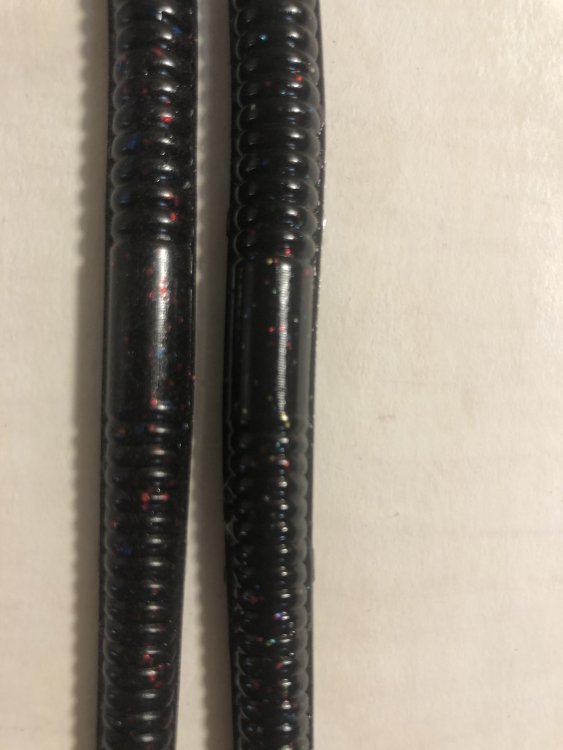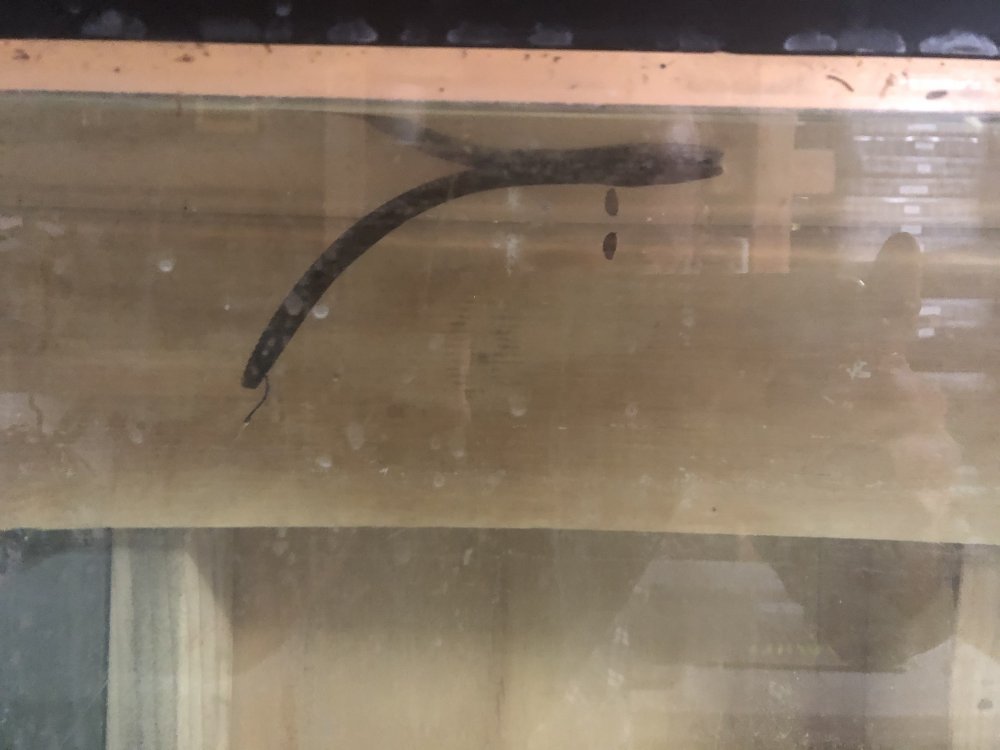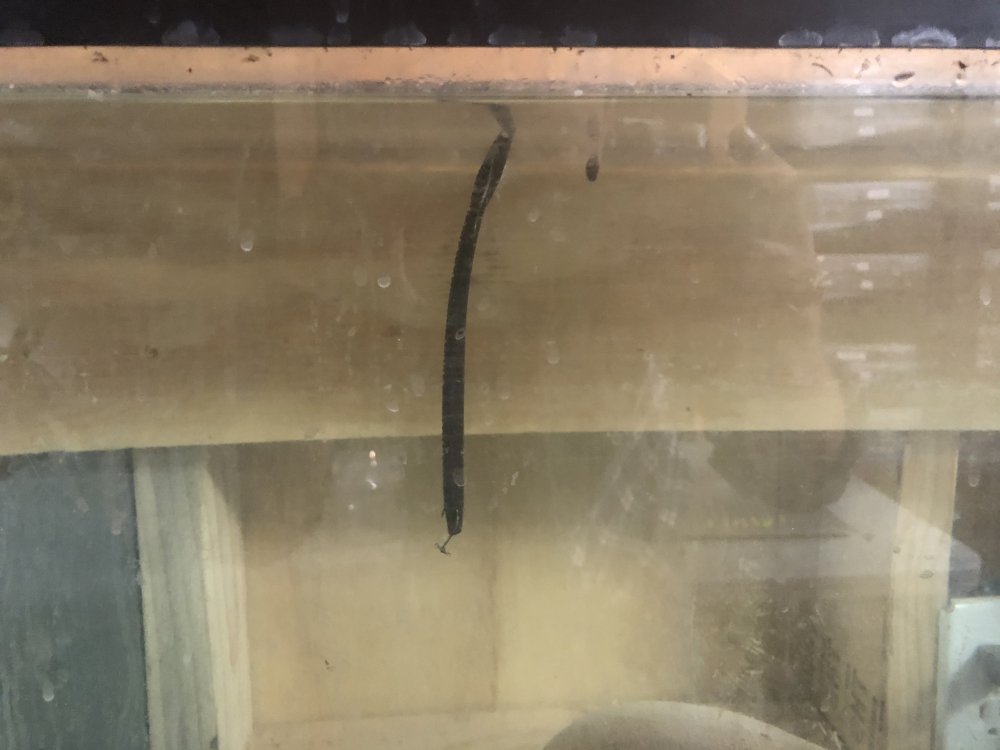Leaderboard
-
in all areas
- All areas
- Images
- Image Comments
- Image Reviews
- Albums
- Album Comments
- Album Reviews
- Topics
- Posts
- Stories
- Story Comments
- Story Reviews
- Classified Ads
- Classified Ad Comments
- Classified Ad Reviews
- Records
- Record Comments
- Record Reviews
- Websites
- Website Comments
- Website Reviews
- Status Updates
- Status Replies
-
Custom Date
-
All time
February 2 2011 - April 19 2024
-
Year
April 19 2023 - April 19 2024
-
Month
March 19 2024 - April 19 2024
-
Week
April 12 2024 - April 19 2024
-
Today
April 19 2024
-
Custom Date
10/29/2020 - 10/29/2020
-
All time
Popular Content
Showing content with the highest reputation on 10/29/2020 in all areas
-
Mark - Yes that would work. BUT, the problem is in the inaccuracy of reading off a volume. You would be lucky to get within 1cc of the correct volume. By my method, I can calculate the filler volume to 0.01cc, 100x more accurate. Good thought, but it is a question of accuracy. Dave2 points
-
Dave, could you measure the weight per volume of the filler material by adding it to a more viscous liquid in a graduated beaker. A before and after weight should tell you the weight of the filler added, and the change in the level of the test liquid should tell you the volume of the filler after the air around it is removed. I think you could do it with a small amount of one of the resin's components. But, then again, what do I know. Hahaha2 points
-
Hello anglers friends, greetings from Peru. It has passed long time since my last visit to the Forum. I hope you all and your families are doing well. After more than three years without posting any video of my work in my Youtube channel, I restarted again to work on one of my favorites hobbies which is lure making. I want to share the last lures that I’m making for trout fishing at my homeshop. I think that the passion and emotion that every angler who ties or make a wooden lure is the same. Our common dream is to catch our beautiful preys with something done by ourselves. This time, I want to talk and show these tiny balsa wooden lures made with the purpose to have fun when I go for catching trouts in the creeks located in Peruvian highlands. The Attila Trout Hunter is a tiny lure made of Balsa wood, about 1 5/8” length (4cm), 5/16 oz weight (3.2gr), fantasy and natural colours, armed with #12 or #14 Gamakatsu hooks, and small 3D homemade eyes. Something important to say, each lure is “one of a kind”. To have a plenty and pleasure fishing experience using the Attila Trout Hunter, it’s needed to use a good ultralight equipment (UL rod 5.5', 6-8 lbs line, 10-12 FC leader). In this way you can be accurate when casting these light lures, and when you catch a trout feel in HD the fight with those gorgeous fishes. Something to remark, given that I love the beautiness of trouts, I always do C&R. Therefore, before to use any of these lures, first I kill all hooks barbs. I invite you to watch my video using the below link, and please let me know your thoughts, and give me your comments and recommendations. Thanks, https://youtu.be/cnfk_dn9U-E1 point
-
I won't ship less than 100 baits... Just not worth it. Charge a fair price for the baits and have the buyer pay the $7.00 or so shipping... It's well worth their while to buy 300 or so at a time.1 point
-
Jason - Not such a good idea, wood fibers, especially with lighter woods, are very weak and easily tear out. I like runny CA glue; it soaks in deep, seals, hardens the wood and still leaves a rough surface. I have never had a lip come out, but I am not a regular fisherman, in fact I very rarely fish lures. I am a lure designer not a fisherman. I am an engineer also, which gives me confidence in the mechanics of my reply. Dave1 point
-
OK, I have re-read you OP. You seem to already understand your problem, but it is still a useful post for others. It is a good learning thread. Obviously there is no chemical 'connection' between the sealing Etex and the D2T. Both give a shiny smooth surface, there is no keying/attachment. It is not enough to simply scuff the lip to provide a key, you will have to scuff the inside of the Etex covered lip slot too. Don't just scuff with coarse sand paper, get a small drill bit in there and severely scuff the slot and the lip surface. As mentioned above, drill some dimples in the lip as well as the SEVERE scuffing operation. Dave1 point
-
If lexan/polycarbonate bills aren't scuffed or scored in some way no real bond will happen. I use a 1/16 drill bit to put dimples in the material ( lexan/polycarbonate ) for grip for any adhesives I use and never had one fall out.1 point
-
The padded envelopes are 67.95 per 500. Size 6.5 X 10. I get them on Ebay Yes you can add about .13 ea on the padded envelopes. I will check with my wife & see if USPS had another price increase, seems like she said something about that a couple of weeks ago.1 point
-
Thanks for the information it's really helpful, the graph is very interesting, I'm going to do some testing over the weekend using Dave's spreadsheet to work out what's going on with the products I am curently using. I think the way forward is Alumilite & proper glass bubbles though, the supplier of my products has told me their resin & fillite product ate more dense than Alumilite & glass bubbles. I think by what Dave has suggested this can make a huge difference from the start! Andy.1 point
-
1 point
-
Sound like the etex and devcon may not be playing nice together, or maybe the etex is not fully cured before you go on to your next step. You can glue in the lip with superglue. That should hold it in and it cures very fast. Also the slot should be kind of snug.1 point
-
I said I would post my results. Here they are for anyone else wanting to know about floating plastics. I bought the 1 pint of micro floating bubbles from lurecraft. It's a very white powdery substance which I would treat just like white powder used for pearl colors. I used a respirator and facemask when handling it the first time due to all the safety concerns posted on here but after using it with all fans off I realized it can be handled like any powder substance. It doesn't just fly all over the room the second the can is opened. Regarding the results. I found I had to use 1 tablespoon and 2 1/2 teaspoons to 1 cup dead on white feather floating finesse worm plastic on a 6.5" trick worm mold, using a size 6 dropshot hook to allow the trick worm to float mid water column behind the carolina rig. I also attached it o a drop shot rig on a size 4 hook and saw similar results, with the bubbles allowing the worm to suspend mid water column w/o tension on the line. Pretty awesome, considering this allows ya to literally fish the worm in place on long casts w/o the worry of thee worm sinking to the bottom and getting caught up in weeds or muk, ruining the cast. I've posted a pic of a trick worm with the bubbles and w/o the bubbles so everyone can see the clarity difference. The bubbles definitely put off a white tone, so solid colors are required but when put in the water I've found the white tone is harder to see than out in open light, so I doubt the bass will care (I'll be testing).1 point
-
Hello all, I see past questions and comments on the Randy Howell Shaky Head Jig. I agree with most who state above the disliking of the Gammy 111 hook. I too am looking at using the VMC 7150 hook. I see several who mentioned this as well, but then no further comments on results. On what other hooks you can use with this shaky head jig...Barlowltackle.com gives GREAT info. what I do is look at the "Main Hook" the mold uses, in this case the Gammy 111. The hook wire measurements is 3/0 = 0.045 up to 5/0 0.053. So now all you need to do is look at a hook and see if it's wire diameter is between 0.044 and 0.054 and you should be good to go. So I would love any feed back on this combo of mold and hook. If someone would be willing to mail me one in 3/16 with a VMC 7150 hook I would gladly pay you postage.1 point
-
Anglinarcher – I agree with a lot of what you have written. A volume measurement in the right measurement vessel (long, narrow and graduated) would give accurate control. Personally, I think that a gram scale with 1DP (decimal place) is simply not accurate enough. I use a 2DP gram scale capable of measuring up to 500g. This is obviously 10X more accurate than a 1DP scale, and within the realms of accurate measurement of MB fillers. From a calculation perspective, weight of filler is necessary to calculate the density of the filler content. The volume of dry filler in a measuring vessel is large, but once mixed into the resin, the volume decreases dramatically, this is because the dry volume contains a lot of air between the grains. This air is eliminated during the mix. It is possible to determine the mix density of the filler and therefore make accurate predictions of a lure’s final outcome. Two test pieces need to be made; to determine the true density of the pure resin and the true density of the filler. These tests need only be performed once as long as the same materials are always used. A new brand or type of material would require a new test piece. A third test piece, a pure resin pour of the lure body is required, to enable calculation of the body’s volume. Again, only one test is required for a particular mold. The reason for this is that for larger bodies, the ‘Archimedes Dunk Test’ is not possible due to the capacity of the gram scale, even a 500g scale could not cope with the weight of water required to submerge a large body. But, knowing the weight and the density of a resin body, the volume can be calculated accurately (g/cm³). Volume of filler is fine for a trial and error build of a resin/filler lure. But, as in this case, you will likely be disappointed with the sink rate of the lure, and it is going to take many pours until you find something remotely acceptable. The aim of my spreadsheet is to get you to exactly where you want to be regarding sink rate without the need for half a dozen or more prototypes, simply by adjusting numbers on a spreadsheet, simply by adjusting filler weight and ballast weight until the required buoyancy number is what you desire. This is what the spreadsheet currently looks like. It looks complex, but the user only uses the yellow boxes, the rest is automatic. Dave1 point
-
I rate Alumilite very highly for casting lures, I use it exclusively, but the more microballons you add the less "pourable" it becomes. I chose to use volume as a quantity because microballons are so light that a small error in mass/weight will make a huge change, while a small error in volume will not. If I did the graph differently again, I would label the axis differently, but 10cc of microballons and 10cc alumilite is a 100% mix on my graph. As you can see on the graph, 9.2 cc of microballons and 10 cc Alumilite white give a density of .69, Water has a density of 1.00. This should at least get you started.1 point
-
1 point









